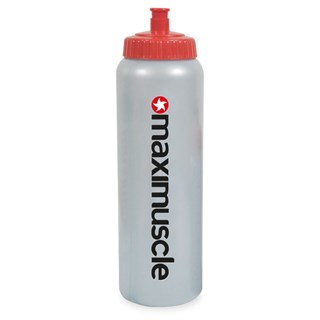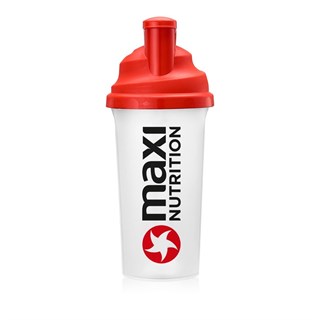WHAT IS PROGRESSIVE OVERLOAD?
We see people going into the gym nowadays with no structure to their workouts, they don’t follow a programme and therefore end up choosing a workout to do from YouTube or Instagram hoping to see results. Tahnee Perfect PT and MaxiNutrition (formally Maximuscle) content creator explains why this is not the best approach to take with your training. I’ve seen it before, people start to lack consistency and become unstimulated because they never see any true progress. It is crucially important you implement progressive overload into your training. This is a style of strength training that involves gradually increasing the intensity of your workouts over time, this is done through sticking to a periodised programme tailored to your specific goals..
HISTORY OF PROGRESSIVE OVERLOAD
The main theory of progressive overload was initially founded by Milo of Croton who in the 6th century B.C. carried a bull to strengthen his body. As the weight of the bull increased so did Milo’s muscle size and strength. This proves that a muscle must experience increased load over time for it to get bigger and you to become stronger. We must remember though that this process takes time and consistency.

HOW TO APPLY PROGRESSIVE OVERLOAD INTO YOUR PROGRAMME
It is important to note that progressive overload isn’t just associated with getting bigger muscles and becoming stronger, it can be achieved in a variety of ways such as improving your range of motion or completing movements with better form and technique. Here are 12 examples of progressive overload that Bret Contreras came up with;
- Lifting the same load for increased distance (range of motion)
- Lifting the same load and volume with better form, more control, and less effort (efficiency)
- Lifting the same load for more reps (volume)
- Lifting heavier loads (intensity of load)
- Lifting the same load and volume with less rest time in between sets (density)
- Lifting a load with more speed and acceleration (intensity of effort)
- Doing more work in the same amount of time (density)
- Doing the same work in less amount of time (density)
- Doing more sets with the same load and reps (volume)
- Doing the same work while losing body mass (increased relative volume)
- Lifting the same load and volume and then extending the set past technical failure with forced reps, negatives, drop sets, static holds, rest pause, partial reps, or post-exhaustion (intensity of effort)
EXAMPLES OF PROGRESSIVE OVERLOAD WITH THE SQUAT
EXAMPLE ONE; weight progression
3 sets of 10 reps at:
| Week 1 | Week 2 | Week 3 | Week 4 |
| 40 kg | 42.5 kg | 45 kg | 47.5 kg |
EXAMPLE TWO; rep increments
3 sets of 50kg for:
| Week 1 | Week 2 | Week 3 | Week 4 |
| 6 reps | 7 reps | 8 reps | 9 reps |
EXAMPLE THREE; wave loading
3 sets of 10 reps
| Week 1 | Week 2 | Week 3 | Week 4 | Week 5 | Week 6 | Week 7 | Week 8 |
| 40 kg | 42.5 kg | 45 kg | 42.5 kg | 45 kg | 47.5kg | 50 kg | 47.5 kg |
PROGRESSIVE OVERLOAD IS GOING TO LOOK DIFFERENT FOR EVERYONE
It is important to remember that everyone is in different stages of their fitness journey. Someone who is an advanced lifter may be more focused on increasing the load over time, perhaps they are wanting to achieve a squat PB in two months time to finish off the last phase of their programme. On the other hand, someone who is a beginner to lifting weights will be more focused on improving their form and technique on specific movements. It is fundamental that you can perform exercises properly and safely before implementing progressive overload.
PROGRESSIVE OVERLOAD, IS THAT ALL I NEED TO DO TO GAIN STRENGTH?
In short, no. To gain strength you must also remember what you do outside of the gym matters to. Your recovery for example requires just as much attention. Think of your training days as ‘stimulation days’ and you rest days as ‘growth days.’ When we strength train are muscles are put under stress and become damaged, it is when we rest that the muscles repair themselves, which over time makes them grow bigger, making us become stronger. Furthermore, getting enough sleep (7-9 hours) is also extremely important. A lack of sleep can hinder recovery, skipping sessions reduces your training volume and therefore your potential to get stronger quicker. It could also impair a person's cognitive performance or their capacity for exercise and increase the risk of exercise-induced injuries. In addition, remember that your body requires energy from food to perform at its best. Eating at maintenance or in a surplus is optimal for growing muscle and gaining strength.
PROGRESS IS NEVER LINEAR
Your progress will go up and go down, it will never occur in a linear nature, (as much as we wish it would)! At one part in your programme, you will see progress quickly and other times you will stay stagnant for a while. Some weeks you will hit numbers and other weeks you won’t. Adaptions happen in waves, and you must be accepting of that. Bad training days are inevitable and unavoidable, but those days are the ones that make you physically and mentally stronger. Being consistent with your programme through the good, bad, and ugly will get you one step closer to your goals.










-135.jpg)
-472.jpg)









